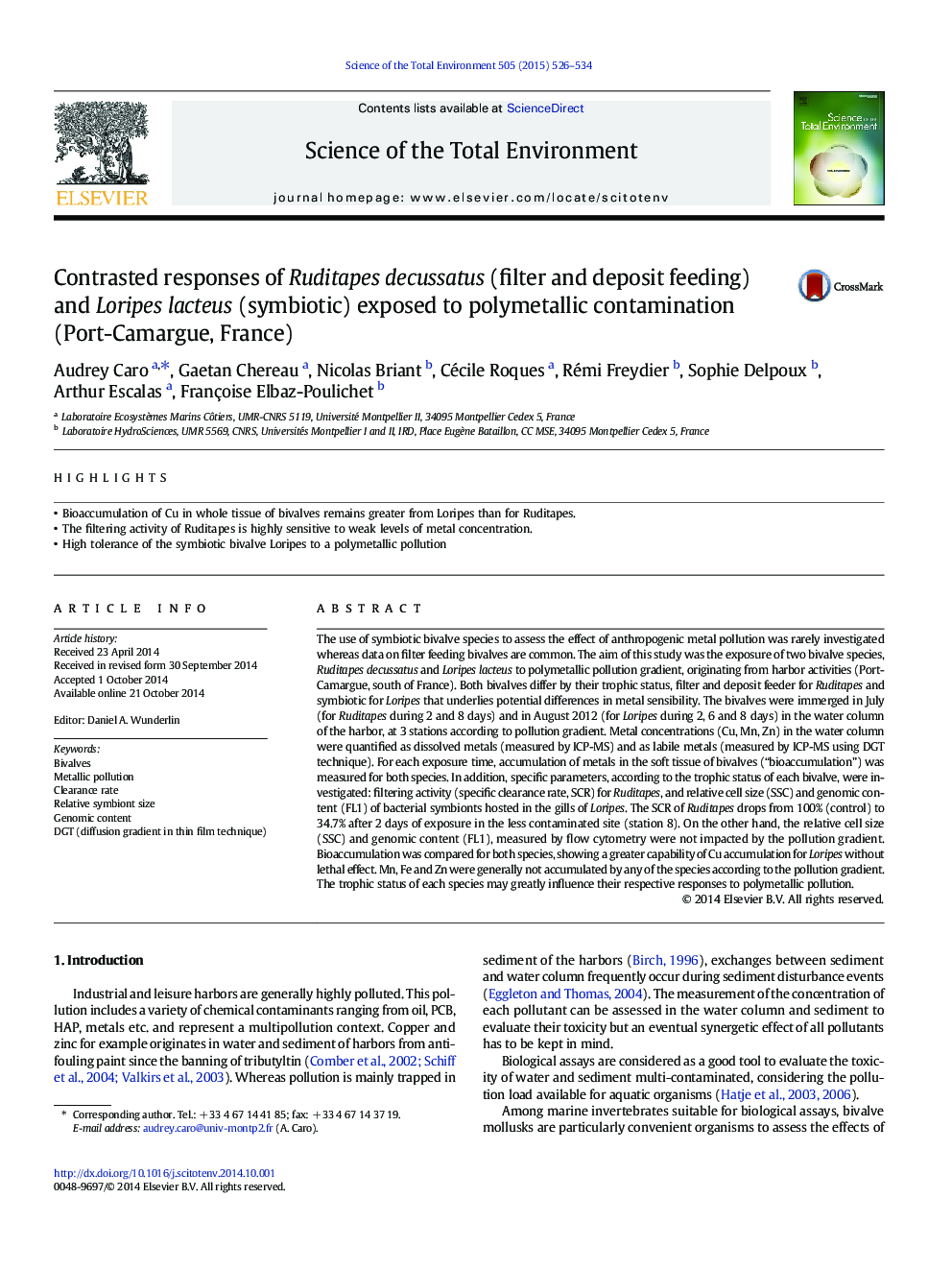| کد مقاله | کد نشریه | سال انتشار | مقاله انگلیسی | نسخه تمام متن |
|---|---|---|---|---|
| 6328094 | 1619770 | 2015 | 9 صفحه PDF | دانلود رایگان |

- Bioaccumulation of Cu in whole tissue of bivalves remains greater from Loripes than for Ruditapes.
- The filtering activity of Ruditapes is highly sensitive to weak levels of metal concentration.
- High tolerance of the symbiotic bivalve Loripes to a polymetallic pollution
The use of symbiotic bivalve species to assess the effect of anthropogenic metal pollution was rarely investigated whereas data on filter feeding bivalves are common. The aim of this study was the exposure of two bivalve species, Ruditapes decussatus and Loripes lacteus to polymetallic pollution gradient, originating from harbor activities (Port-Camargue, south of France). Both bivalves differ by their trophic status, filter and deposit feeder for Ruditapes and symbiotic for Loripes that underlies potential differences in metal sensibility. The bivalves were immerged in July (for Ruditapes during 2 and 8Â days) and in August 2012 (for Loripes during 2, 6 and 8Â days) in the water column of the harbor, at 3 stations according to pollution gradient. Metal concentrations (Cu, Mn, Zn) in the water column were quantified as dissolved metals (measured by ICP-MS) and as labile metals (measured by ICP-MS using DGT technique). For each exposure time, accumulation of metals in the soft tissue of bivalves (“bioaccumulation”) was measured for both species. In addition, specific parameters, according to the trophic status of each bivalve, were investigated: filtering activity (specific clearance rate, SCR) for Ruditapes, and relative cell size (SSC) and genomic content (FL1) of bacterial symbionts hosted in the gills of Loripes. The SCR of Ruditapes drops from 100% (control) to 34.7% after 2Â days of exposure in the less contaminated site (station 8). On the other hand, the relative cell size (SSC) and genomic content (FL1), measured by flow cytometry were not impacted by the pollution gradient. Bioaccumulation was compared for both species, showing a greater capability of Cu accumulation for Loripes without lethal effect. Mn, Fe and Zn were generally not accumulated by any of the species according to the pollution gradient. The trophic status of each species may greatly influence their respective responses to polymetallic pollution.
Journal: Science of The Total Environment - Volume 505, 1 February 2015, Pages 526-534